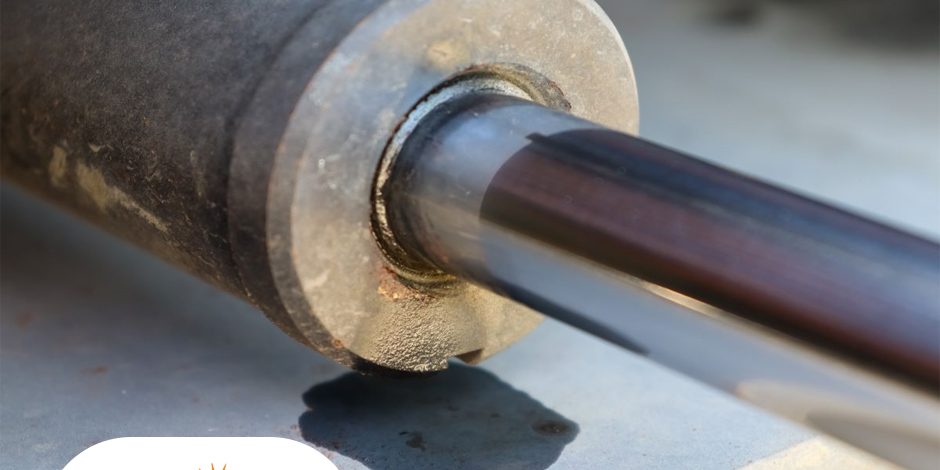Hydraulic leaks can be classified as minor and major; holes, crevices, or punctures can be observed on different surfaces under pressure. Irrespective of size and damage inflicted, liquid-based leaks can lead to high costs, excessive maintenance, and poor performance. Hydraulic leaks are classified into two categories:
-
External Leaks
-
Internal Leaks
External leaks allow the liquid to exit the system unintentionally, whereas internal leaks take the form of orifices and pathways, allowing the fluid to move from a high-pressure zone to a lower one. However, the water never goes out of the system.
How to Fix Hydraulic Leaks?
When it comes to choosing the optimal cement to stop hydraulic leaks, it is vital to consider the specific requirements and conditions. Hydraulic systems involve fluid flow and extreme pressures. Therefore, it is pivotal for sealant manufacturers to develop solutions that can withstand the demands.
Read More
Which is the Best Sealant for Basement Walls?
Is PPC Cement Good for Waterproofing?
How Water Tank Leakage can be fixed in a Timely Manner?
-
Hydraulic Cement
Hydraulic cement is one of the most convenient fillers in the global sealant market. It can restrict fluid outflow from pipes, machines, and other pressurized areas.
Cracks and holes in structures, such as swimming pools, cisterns, chimneys, fountains, and retaining walls can be covered with ease.
Hydraulic cement is a water-activated, fast-setting cement that creates a strong bond when exposed to moisture. It can expand and solidify in quick time, ensuring a tight seal. Hydraulic cement is recognized for its excellent sealing properties and ability to withstand high pressure. In addition, it is water-resistant and compact. Hydraulic cement is available in hardware shops and specialized hydraulic supply outlets.
-
Epoxy Cement
Epoxy mortar or cement is a polymer-based paste composed of solvent, binder, resin, mineral fillers, and specific additives. Epoxy cements are recognized for their excellent strength and bonding capabilities. Epoxy cements offer excellent adhesion to various materials, including metal, concrete, and plastic, making them suitable for sealing hydraulic leaks. Other characteristics include:
- High chemical resistance
- Durability in harsh environments
- Moisture impermeability
- Stain-resistant
- Elongate the useful life of a structure
-
Polyurethane Cement
Polyurethane-based cement is an excellent choice for sealing leaks (crevices, holes, and wall fractures). This sealant is flexible and adhesive; it can cling to different surfaces, including metals, plastics, and concrete. Polyurethane cement is suitable for vibrating structures because of its flexibility and elasticity. Additionally, it offers good resistance to water, chemicals, and UV rays.
Its properties are:
- Slip-resistant
- Chemical-resistant
- Shock-proof
Read More
Bathroom Leakage Effects on Your Health
Types of Household Leakages and How to Repair Them
Factors to Consider While Selecting the Best Cement
In selecting the best cement for hydraulic leaks, it is essential to consider factors, such as rupture severity, material used in construction, and the operating conditions. Consultation with experts can provide valuable insights and guidance too. Furthermore, it is important to follow the manufacturer’s instructions and recommendations regarding different processes (preparation, application, and curing).
Proper surface preparation, including cleaning and roughening, is mandatory to ensure optimum adhesion and sealing performance. Moreover, adequate curing time is crucial for the final layer to bond with the substrate.
Materials Used to Cover Leaks
Besides cement, various materials are used to fix hydraulic leaks. Sealants, such as silicone, acrylic, or polyurethane provide flexible and durable sealing characteristics. Tape (adhesive and sealing), offers a quick and temporary fix for minor leaks. Rubber or Silicone Sheets, Foam Sealants, and Putty are other optimal solutions.
Conclusion
Purchasing the optimal cement type for hydraulic leaks is not easy. You need to consider various factors like crevice size, material bonding capability, etc. So, whether it’s hydraulic cement, epoxy-based cement, and polyurethane-based cement, each type offers unique advantages and attributes. By considering the characteristics of cements and assessing the specific needs of the hydraulic system, one can make an informed decision. Connect with Waterproofing.pk for the best outcomes.







